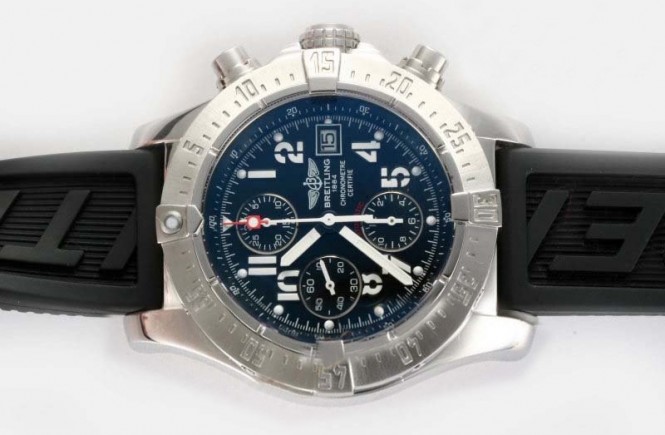As watch brands go replica Breitling isn’t exactly subtle. It takes a fairly tremendous amount of self-confidence to promote your watch as being tougher, more precise and generally more bad-ass than a freaking aircraft carrier. There is a long story between Breitling and he pilot’s watch of choice, however, it was the Breitling replica Emergency that solidified the company’s commitment to aviators and adventurers around the world with one genuinely unique complication the individual locator beacon. One of the most interesting Breitling collections of recent years is pilot model.
The story started with Ernest Schneider, the man who acquired replica Breitling in 1979 when it was on the verge of collapse, and kept it afloat during the quartz crisis, thanks to a new generation of iconic replica Breitling models. In an uncharacteristically playful move from the Swiss giant, these are a breath of fresh, colorfully contrasting air. DuringWorld War II, an officer with the Swiss Army signal corps as well as a energetic pilot and engineer, he was involved in communication at a NATO conference in the mid-1980s about emergency beacons and the high incidence of false activation which cost the related authorities a large amount of time and money. It was at these talks that the concept of a timepiece with a individual locator beacon was released. Along with the meeting, Breitling started to work with Dassault Electronique to innovate durable beacon technology which could be embed into a wristwatch and after ten years of development, the Breitling Emergency was proclaimed.
Released in 1995, the Emergency chartered a beacon which, when activated, transmitted a signal on the global distress frequency of 121.5MHz (for owners in the military, the micro-transmitter was changed to manage on the military distress band). This transmission could be received up-to 167km away and was directional, offering authorities to locate the beacon with great performance. Originally the Emergency was merely accessible to licensed pilots, however, gradually the titanium watch was provided to the general public once a document was signed acknowledging their responsibilities in paying for rescue intentions in the event of a false alarm. In this case, some military units even gifted the timepieces to their pilots as an unofficial insurance policy, with unconfirmed reports that the Emergency complemented official beacon systems and contributed to successful rescue missions. At the same time, Breitling offered to replace the watch at no charge to the owner, if the transmitter was utilised during a true emergency situation.
Among 1995 and 2010, when the first Emergency model was finally discontinued, 40,000 units were sold, allegedly helping save dozens of lives – and in accord to Breitling, not a single false alarm was ever reported as having come from an Emergency replica watch. Nevertheless, false alarms generally were on the rise, and in 2009 the old 121.5MHz frequency began being phased-out as the primary distress frequency for global search and rescue, which meant it was time for Breitling replica watches to begin work on a new model.
Early Breitling Emergency catalogue.
The new frequency is monitored by the international search and rescue program known as Cospas-Sarsat, with the 406MHz band able to be received by low-level satellites and ground antennae. The digital encoding allows for fewer false alarms as well as a far greater range, but tends to lack the accuracy of the original 121.5MHz. The 406MHz transmitter also requires a much bigger battery to be powered effectively. Daily Mail article from 2003 detailing the Emergency being used in a rescue.
The plan was to come back, bigger and better than ever, and four years later the Emergency II was launched. Along with the initial121.5MHz homing signal, the watch – which was now technically categorized as a personal locator beacon (PLB) by authorities – now also transmitted on the digitally-encoded 406MHz frequency.
Celebration of replica Breitling 20 years
